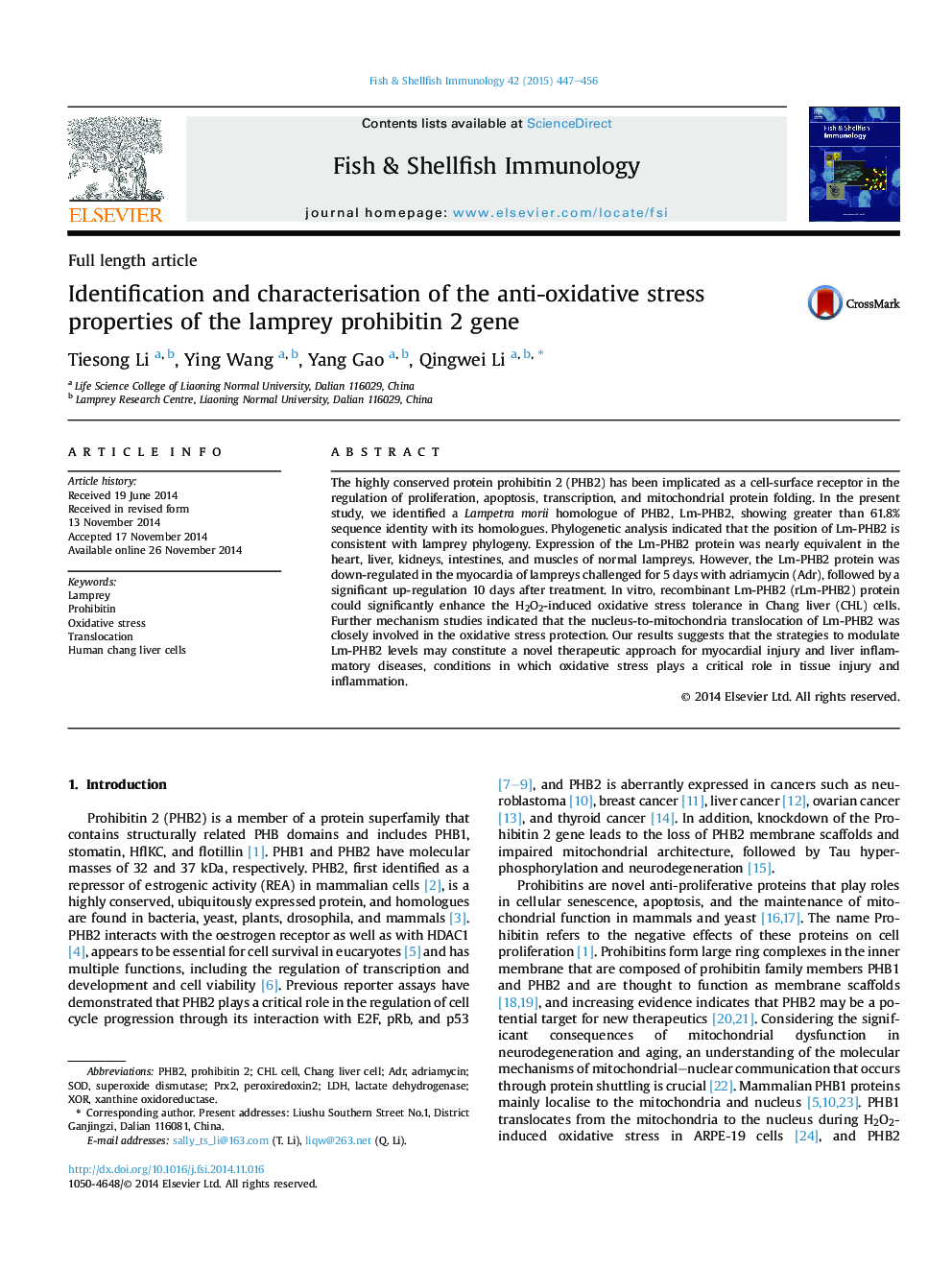| Article ID | Journal | Published Year | Pages | File Type |
|---|---|---|---|---|
| 2431368 | Fish & Shellfish Immunology | 2015 | 10 Pages |
•We identified and characterized a Lamprey homologue of PHB2, Lm-PHB2.•Expression of the Lm-PHB2 protein was nearly equivalent in various tissues of normal lampreys.•Lm-PHB2 protein was first down-regulated and then significantly up-regulated in the myocardia of lampreys challenged with adriamycin.•Recombinant Lm-PHB2 protein could significantly enhance the H2O2-induced oxidative stress tolerance in Chang liver cells.•The nucleus-to-mitochondria translocation of Lm-PHB2 was closely involved in the oxidative stress protection.
The highly conserved protein prohibitin 2 (PHB2) has been implicated as a cell-surface receptor in the regulation of proliferation, apoptosis, transcription, and mitochondrial protein folding. In the present study, we identified a Lampetra morii homologue of PHB2, Lm-PHB2, showing greater than 61.8% sequence identity with its homologues. Phylogenetic analysis indicated that the position of Lm-PHB2 is consistent with lamprey phylogeny. Expression of the Lm-PHB2 protein was nearly equivalent in the heart, liver, kidneys, intestines, and muscles of normal lampreys. However, the Lm-PHB2 protein was down-regulated in the myocardia of lampreys challenged for 5 days with adriamycin (Adr), followed by a significant up-regulation 10 days after treatment. In vitro, recombinant Lm-PHB2 (rLm-PHB2) protein could significantly enhance the H2O2-induced oxidative stress tolerance in Chang liver (CHL) cells. Further mechanism studies indicated that the nucleus-to-mitochondria translocation of Lm-PHB2 was closely involved in the oxidative stress protection. Our results suggests that the strategies to modulate Lm-PHB2 levels may constitute a novel therapeutic approach for myocardial injury and liver inflammatory diseases, conditions in which oxidative stress plays a critical role in tissue injury and inflammation.
